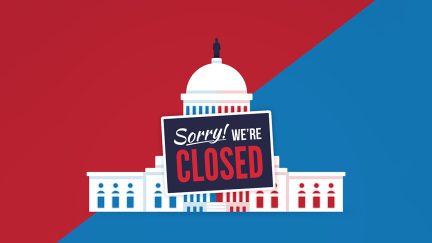For more stories like this, sign up for the PLANSPONSOR NEWSDash daily newsletter.
Barry’s Pickings: ESG QDIA
Michael Barry, president of O3 Plan Advisory Services LLC, offers his thoughts on the DOL’s proposal to ban ESG-centric funds from DC plan QDIAs—and suggests a middle ground.
As I’ve tried to make clear in prior columns—e.g., DOL’s Fiduciary Theory: Fundamentally Incoherent—I believe that the concern that should animate the Department of Labor (DOL)’s fiduciary policy is “other people’s money.” That is, with respect to the critical Employee Retirement Income Security Act (ERISA) fiduciary standards of loyalty and prudence, individual fiduciaries should be prevented from acting (1) on the basis of personal interests rather than the broad interest of plan participants and (2) with less prudence (wisdom, frugality, etc.) than they would with their own money.
Stricter Rules for DB Plans
Given that view, it is obvious that I would applaud the DOL’s proposal to impose (marginally) stricter rules on fiduciaries with respect to defined benefit (DB) plan investments based on environmental, social and governance (ESG) factors or in ESG-themed funds.
It’s not their money.
I am, however, open—and I’m curious how the DOL would respond on this issue—to an argument that certain funds—e.g., a U.S. auto workers fund—should be able to restrict or prohibit investments in non-U.S. auto companies without violating the Employee Retirement Income Security Act (ERSIA).
DOL’s Proposal With Respect to DC Plans and QDIAs
The situation is clearly different—as the DOL recognized in its proposal—with respect to investments in participant-directed defined contribution (DC) plans. For these plans, the DOL provides somewhat more relaxed rules.
I want to focus primarily on one aspect of the DOL’s proposal in this regard, the provision that an ESG or similarly oriented investment mandate may not be added as, or as a component of, a qualified default investment alternative (QDIA).
The Importance of QDIAs
Target date funds (TDFs)—the typical QDIA—represent 27% of total DC plan assets and a significant portion of new fund flows. For some funds, ESG or non-ESG, being part of a plan’s TDF can be a make-or-break issue. So, this proposal by the DOL—to ban ESG from QDIAs—is not a small thing.
Going back to my fundamental ERISA fiduciary policy issue—is this other people’s money? I think, yes. So you can see why the DOL is taking this position. Sort of. While participants can typically affirmatively elect-in to a plan’s default fund, one assumes that most of the money in these funds got there by default. So, the participant, in this case, has not said “this is what I want to do with my money.”
In Defense of Non-Pecuniary Participant-Directed Investment
In participant-directed DC plans, there is typically no “other-people’s-money” problem—that is, when a participant is directing that her money be invested in a specific fund/investment that she has chosen from a broad range of investments on the plan’s fund menu, ERISA fiduciary rules should not apply. She should be treated exactly as she would be treated if she walked into a brokerage and bought that fund/investment with her own money. In other words, that transaction should be regulated by the Securities and Exchange Commission (SEC), not the DOL.
That is exactly what ERISA Section 404(c) says, notwithstanding the DOL’s 46-year campaign to restrict and frustrate the application of 404(c) to these plans.
In this regard, there’s an important point to make about ESG funds and QDIAs. ESG funds obviously raise some issues under “generally accepted investment theories.” In my humble opinion, whatever merit there may be to ESG’s theoretical relevance to investment performance is actually a question of price: whether the market has adequately discounted for those concerns. If it has, then they are economically irrelevant. Or as the DOL puts it, non-pecuniary.
But individual participants should be able to do what they want with their own money. If they like skiing, they should be allowed to invest in a ski resort company or ski manufacturer, even if all responsible experts agree those investments are over-priced.
The same with ESG investments.
The Importance of ESG
We know that, whatever I or the DOL or anyone reading this think, the ability to make ESG investments is important to a lot of participants, particularly younger ones that we all believe need all possible encouragement to start saving.
If telling them “here’s a chance to do good with your money” does that, then that’s an opportunity we should offer them.
In this regard, I emphatically believe that the rules with respect to non-QDIAs should be even more relaxed than the DOL proposes.
But what about the critical issue of QDIAs?
Is There Any Middle Ground With Respect to QDIAs?
I don’t think that, without some sort of affirmative indication by him, a plan should be permitted to default a participant into a fund that invests in special, “non-pecuniary” investments of any sort. I could be talked out of that, but not easily.
That said, I think that a plan should be permitted to offer an “alternative” TDF that does invest in ESG, and that the standards for that election should be as flexible as possible, consonant with a requirement that the participant actually consent.
We should be creative here. The DOL should make it clear that a plan could maintain such an alternative ESG TDF and, indeed, market it to participants, without violating ERISA. Again, that is what 404(c) is for.
And these rules should work both in the standard new participant/default context and in re-balancing transactions.
Hopefully Some Stability in These Rules
Consolidating (and reconciling) the DOL’s years of sub-regulatory guidance into a regulation is a welcome project. For nearly 30 years, we’ve seen the guidance with respect to ESG investments zigzag as Republican administrations replace Democrats and Democrat administrations replace Republicans. The DOL should seriously consider all points of view and not simply enforce the current administration’s take on this issue. The latter approach would be unlikely to produce stability—it would probably just invite more zigzagging, when administrations change.
Michael Barry is president of O3 Plan Advisory Services LLC. He has 40 years’ experience in the benefits field, in law and consulting firms, and blogs regularly at http://moneyvstime.com/ about retirement plan and policy issues.
This feature is to provide general information only, does not constitute legal or tax advice, and cannot be used or substituted for legal or tax advice. Any opinions of the author do not necessarily reflect the stance of Institutional Shareholder Services or its affiliates.



